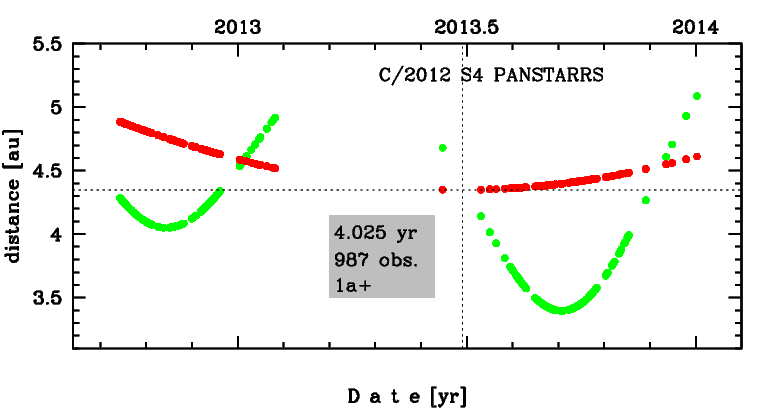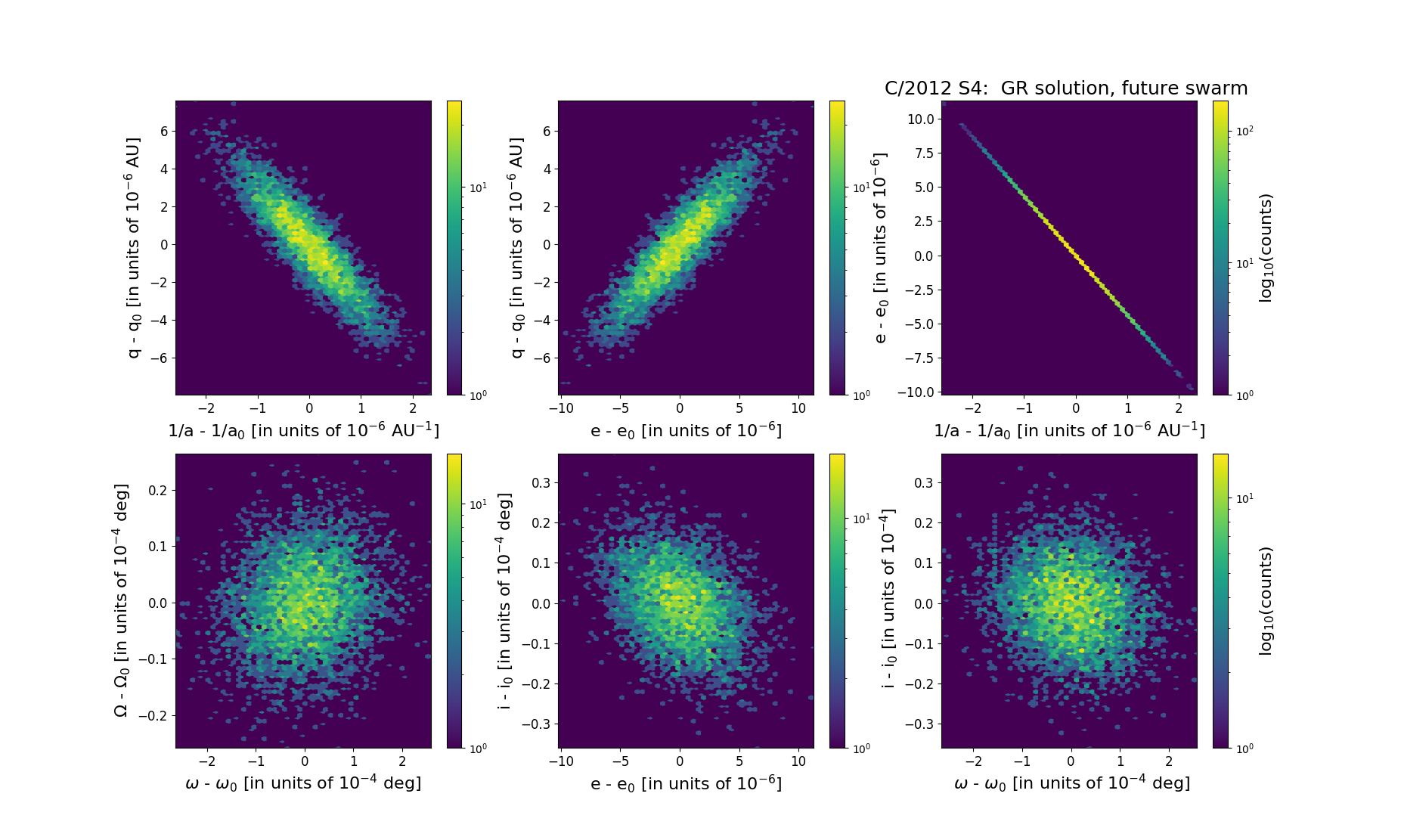C/2012 S4 PANSTARRS
more info
Comet C/2012 S4 was discovered on 28 September 2012 with Pan-STARRS 1 telescope (Haleakala), that is nine months before its perihelion passage. It was observed during two oppositions until 1 January 2014.
Comet had its closest approach to the Earth on 15 September 2013 (3.396 au), about 2.5 months after perihelion passage.
Solution given here is based on data spanning over 1.26 yr in a range of heliocentric distances: 4.89 au – 4.349 au (perihelion) – 4.61 au.
This comet suffers small planetary perturbations during its passage through the planetary system; have orignal semimajor axis shorter than 10000 au and more tight future orbit.
Comet had its closest approach to the Earth on 15 September 2013 (3.396 au), about 2.5 months after perihelion passage.
Solution given here is based on data spanning over 1.26 yr in a range of heliocentric distances: 4.89 au – 4.349 au (perihelion) – 4.61 au.
This comet suffers small planetary perturbations during its passage through the planetary system; have orignal semimajor axis shorter than 10000 au and more tight future orbit.
| solution description | ||
|---|---|---|
| number of observations | 937 | |
| data interval | 2012 09 28 – 2014 01 01 | |
| data type | perihelion within the observation arc (FULL) | |
| data arc selection | entire data set (STD) | |
| range of heliocentric distances | 4.89 au – 4.35 au (perihelion) – 4.61 au | |
| detectability of NG effects in the comet's motion | NG effects not determinable | |
| type of model of motion | GR - gravitational orbit | |
| data weighting | YES | |
| number of residuals | 1842 | |
| RMS [arcseconds] | 0.47 | |
| orbit quality class | 1a | |
| orbital elements (barycentric ecliptic J2000) | ||
|---|---|---|
| Epoch | 2321 09 11 | |
| perihelion date | 2013 06 27.51022618 | ± 0.00053284 |
| perihelion distance [au] | 4.34788150 | ± 0.00000212 |
| eccentricity | 0.99846330 | ± 0.00000293 |
| argument of perihelion [°] | 163.507036 | ± 0.000078 |
| ascending node [°] | 173.087207 | ± 0.000007 |
| inclination [°] | 126.532672 | ± 0.000009 |
| reciprocal semi-major axis [10-6 au-1] | 353.44 | ± 0.67 |
| file containing 5001 VCs swarm |
|---|
| 2012s4a5.bpl |

